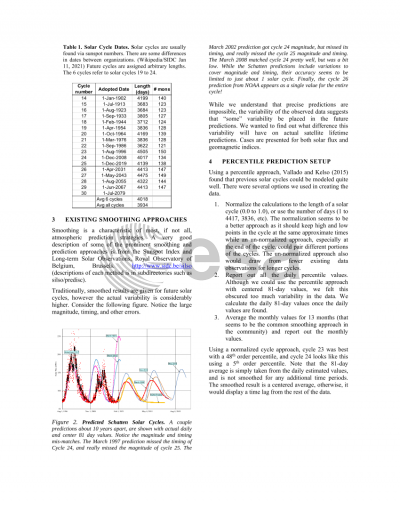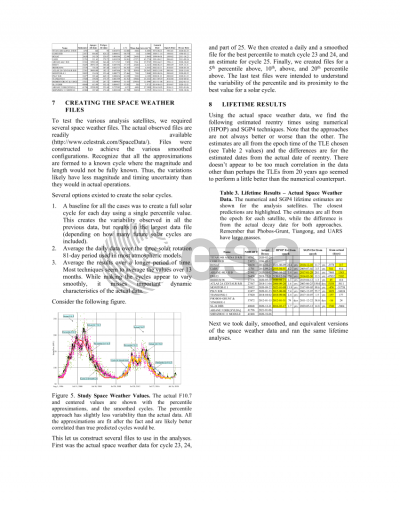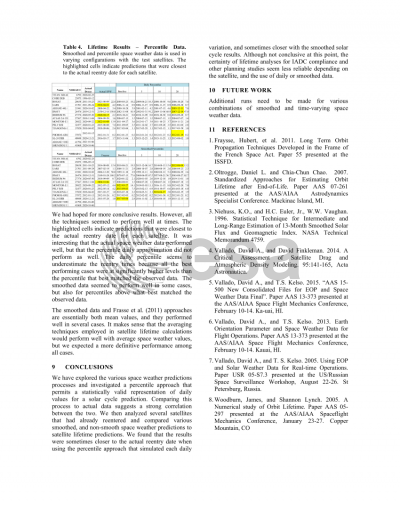Document details

Abstract
Accurate satellite lifetime estimates are an important value to determine, especially when considering satellite design. Minimizing estimated post-mission lifetime below an internationally-established threshold is one of the central tenets to today’s orbital debris mitigation guidelines.
Many tools exist for estimating the estimated decay time. While these tools vary in levels of fidelity, one of the most significant influencers on satellite lifetime is the impact of changing solar flux and geomagnetic predictions. For this reason, further research and comparisons of the various long-range space weather pre-dictions and their effect on satellite lifetime is warranted.
Vallado and Kelso (2015) extended the percentile approach (Oltrogge and Chao, 2007) to estimate space weather parameters for both the current solar cycle, plus additional future cycles, once a certain per-centile was chosen. The advantage is that actual observed data is used to form any future cycle. This includes the ability to take the daily values of each parameter (solar flux, geomagnetic indices, eight 3-hourly values, etc), and predict a future value. Because the data originates from correlated indices at points in time, the resulting predictions may better approximate the actual conditions on a date in the future.
The paper begins by examining the known solar cycles. Space weather varies greatly on both short-term (days to weeks) timescales, and long-term (approximately eleven year cycle). Consider the last 5 solar cycles of observed solar flux and geomagnetic variations. Note that the timing (early/late) and the magnitude (high/low) are not consistent and predictable. There is also some variability in the accepted start and stop dates for each cycle. A percentile approach to predict space weather from the existing observed values re-quires an accurate starting point so the solar cycle rise occurs at approximately the same relative point in each cycle.
All space weather prediction models use some form/length of smoothing in the representation of the values. Admittedly, the prediction process has enough error in it to suggest some smoothing, yet, the effect of this smoothing on satellite position and lifetime is largely unquantified. One study [Woodburn, 2007] found via stochastic modeling that smoothing can have the effect of underestimating decay due to the non-linearities of drag forces as a function of space weather proxies. The smoothing is generally over about 13 months. Although the resulting data is convenient for transmission, does it accurately reflect the behavior a satellite will experience? Note that this smoothed solar activity is not to be confused with the 81-day aver-age. Positional differences are shown for various space weather conditions (high and low solar activity), as well as smoothed results.
Le Fevre et al (2011) discuss an equivalent solar activity value they derive, predominantly for reentry calculations. It consists of statistically derived constant solar flux and geomagnetic values that assure a 50% probability of achieving a 25-year lifetime with various solar activity levels. Comparisons are also made to this approach as it is a variation of the smoothed methods used elsewhere.
Longer range space weather predictions, those of 3-4 solar cycles or more, are even less certain. However, they also produce differences in satellite lifetime. Comparisons are made for satellites having longer lifetimes, again using percentile daily and smoothed approaches.
Preview







